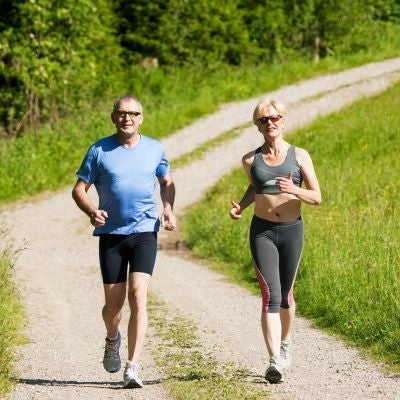Your support helps us to tell the story
From reproductive rights to climate change to Big Tech, The Independent is on the ground when the story is developing. Whether it's investigating the financials of Elon Musk's pro-Trump PAC or producing our latest documentary, 'The A Word', which shines a light on the American women fighting for reproductive rights, we know how important it is to parse out the facts from the messaging.
At such a critical moment in US history, we need reporters on the ground. Your donation allows us to keep sending journalists to speak to both sides of the story.
The Independent is trusted by Americans across the entire political spectrum. And unlike many other quality news outlets, we choose not to lock Americans out of our reporting and analysis with paywalls. We believe quality journalism should be available to everyone, paid for by those who can afford it.
Your support makes all the difference.Can you run a mile (1.6 kilometers), and if so, how fast? If you’re middle-aged, researchers claim that this fitness test could predict your chances of having a heart attack or stroke over the next decade.
In two separate studies announced May 18, American researchers from the University of Texas Southwestern have found that how fast a middle-age man can run a mile can help predict his risk of dying of a heart attack or stroke decades later; for women, running performance could be an early indicator of cardiovascular disease.
In one study, researchers examined heart disease risks in men aged 45, 55, and 65 and discovered that a 55-year-old man who needs 15 minutes to run a mile has a 30 percent lifetime risk of developing heart disease. In contrast, a 55-year-old who can run a mile in eight minutes has a lifetime risk of less than 10 percent. A second study had similar findings based on treadmill running. The research used data from tens of thousands of participants from 1970 to 2006.
"Heart disease tends to cluster at older ages, but if you want to prevent it, our research suggests that the prescription for prevention needs to occur earlier – when a person is in his 40s and 50s," said Dr. Jarett Berry, corresponding author on both studies.
Staying fit has been linked to the fountain of youth in recent research, with researchers from Tel Aviv University discovering that endurance exercises, such as jogging or bicycling, can increase the number of muscle stem cells and enhance their ability to rejuvenate old muscles.
The World Health Organization also recently advised people engage in at least 150 minutes of moderate physical exercise a week to reduce the risk of breast and colon cancers.
If you're lacing up your running shoes for the first time in middle age, then pay attention to your nutrition, stay hydrated, and start slowly, according to health and fitness website Livestrong. Also, wear the right shoes and be careful of temperature extremes, and first talk to your doctor if you have a heart condition or other ailment.
Read more tips on developing a running program: http://www.livestrong.com/article/420265-tips-to-start-running-in-middle-age
Access the studies' abstracts published in the following journals:
Journal of the American College of Cardiology
Circulation

Join our commenting forum
Join thought-provoking conversations, follow other Independent readers and see their replies
Comments